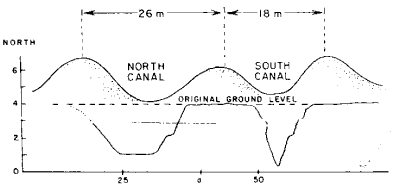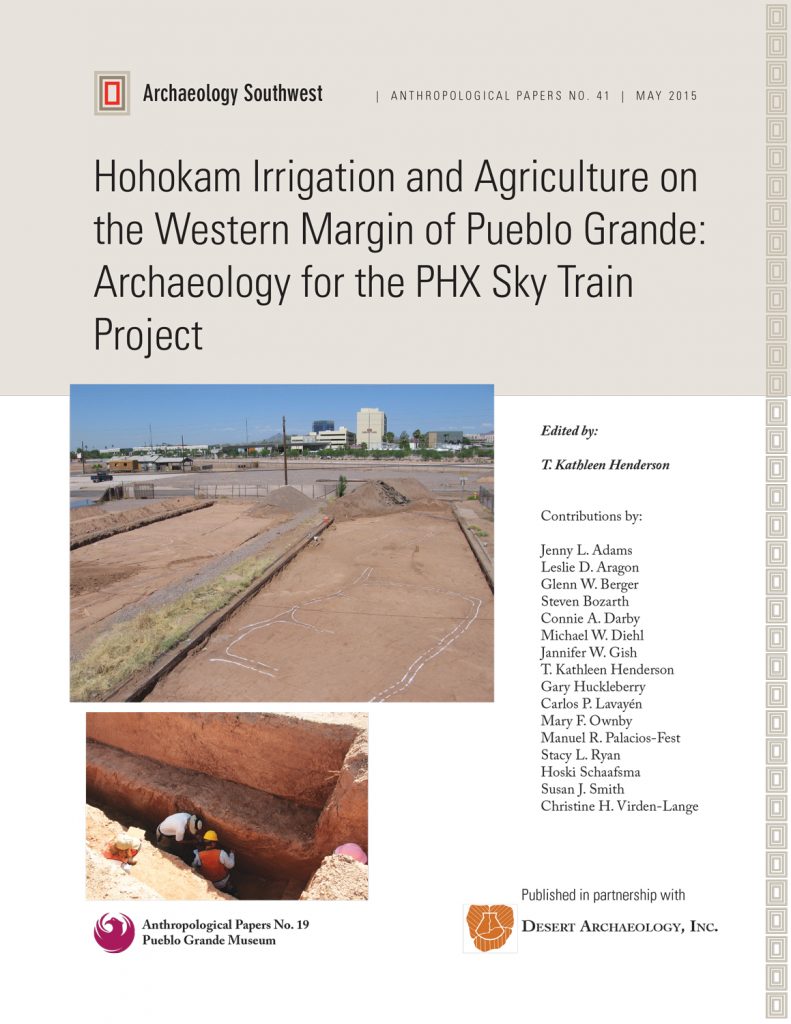

From 900 to 1150 CE, neighboring Chaco society encouraged trade throughout northern Arizona and into southwest Colorado and southern Utah. Trade occurred between the Patayan, who were situated along the Lower Colorado River and in southern California the Trincheras of Sonora, Mexico the Mogollon culture in Eastern Arizona Southwest New Mexico Northwest Chihuahua, Mexico and the Ancestral Puebloans in Northern Arizona. The Hohokam Core was located along rivers, and as such inhabited a prime trade position. The Hohokam also extended into the Mogollon Rim.

Collectively, the Core and Peripheries formed the greater Hohokam Regional System, which occupied the northern or Upper Sonoran Desert in Arizona. The Phoenix Basin was the Hohokam Core Area, and the Hohokam Periphery were adjacent areas where the Hohokam culture extended. Hohokam society is primarily associated with the Gila and lower Salt River drainages in the Phoenix basin. Map of Hohokam and neighboring cultures in circa 1350 Therefore, the archaeological term Hohokam should not be confused with huhugam, the reverence of ancestors and descendants. Similarly, in the 1970s, archaeologist Hardy translated the O'odham word huhugam to mean "that which has perished." However, huhugam refers to past human life and not to objects such as ruins. He applied the existing O'odham term for the culture, huhu-kam, in its common mistranslation as "all used up" or "those who are gone", to classify the remains that he was excavating in the Lower Gila Valley. Gladwin differentiated Hohokam culture from others in the region. The spellings are commonly thought to be interchangeable, but they have different meanings. There are several official spelling variants for the name, including Hobokam, Huhugam, and Huhukam. Nevertheless, Hohokam are one of the four major cultures of the American Southwest and Northern Mexico, according to Southwestern archaeology.

Other archaeologists prefer to identify ancient Arizona as part of the Oasisamerica tradition and instead call Hohokam the Oasisamericans. European-American settlers later infilled some canals, while others renovated, as with the Mormon pioneers settling the Lehi area of Mesa near Red Mountain.Īccording to the National Park Service, the word Hohokam is borrowed from the O'odham language, and is used by archaeologists to identify groups of people who lived in the Sonoran Desert. When Hohokam society collapsed, the dirt canals fell into disrepair. The original canals were dirt ditches and required routine maintenance those currently in use are lined with concrete.

A portion of the ancient canals has been renovated for the Salt River Project and helps to supply the city's water. Their canal network in the Phoenix metropolitan area was the most complex in the pre-contact Western Hemisphere. In modern-day Phoenix, the Hohokam are recognized for their large-scale irrigation networks. Despite cultural exchange at trade centers, self-sufficiency and local resources were emphasized. The harshness of the Sonoran Desert may have been the most influential factor on the society. Some communities established significant markets, such as that in Snaketown. Hohokam societies received a remarkable amount of immigration. Hohokam settlements were located on trade routes that extended past the Hohokam area, as far east as the Great Plains and west to the Pacific coast. Most archaeologists either argue it emerged locally or in Mesoamerica, but it was also influenced by the Northern Pueblo culture. According to local oral tradition, Hohokam societies may be the ancestors of the historic Akimel and Tohono Oʼodham in Southern Arizona. Archaeologists disagree about whether communities that practiced the culture were related or politically united. It existed between 3 CE, with cultural precursors possibly as early as 300 BCE. Hohokam ( / h oʊ h oʊ ˈ k ɑː m/) was a culture in the North American Southwest in what is now part of Arizona, United States, and Sonora, Mexico. The Great House at the Casa Grande Ruins National Monument


 0 kommentar(er)
0 kommentar(er)
